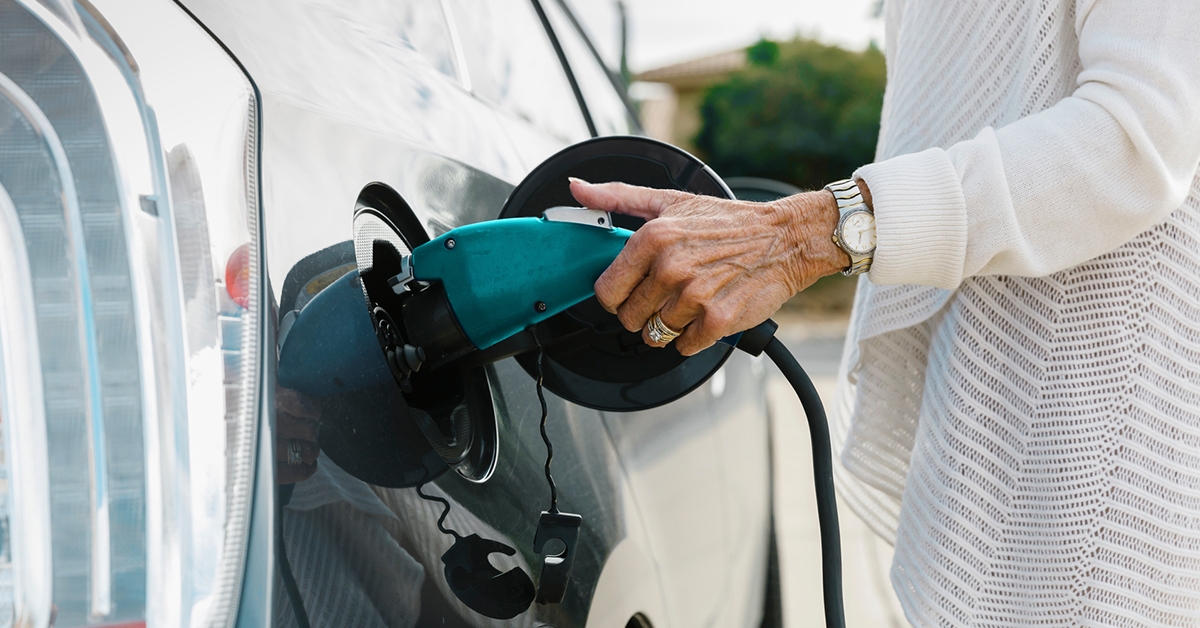Electric vehicle 101: taking care of your car
Everything you need to know about using your electric vehicle, from charging your battery to getting car insurance.

Driving an electric vehicle or EV has a positive impact on both the environment and your personal finances, but there is some important information to know before hitting the road.
To help anyone who has recently purchased an electric vehicle, is planning to buy soon, or is on the fence about making a purchase, we created this introductory guide to electric vehicle ownership in collaboration with l'Association des Véhicules Électriques du Québec.
How is maintaining an EV different from taking care of a traditional car?
In many ways, EVs are easier to take care of than traditional cars. Electric motors and regenerative brakes require less maintenance than combustion engines and friction brakes. Electric vehicles also run with fewer fluids: you’ll only need to monitor the coolant for the thermal management system, brake fluid and windshield-washer fluid.
Instant torque can be hard on tires, so it’s a good idea to invest in tires made for EVs.
You’ll also need to get in the habit of charging your electric car battery every night, just like you plug in your cell phone before bed. If you have a plug-in hybrid, you can charge your battery with a regular 120 volt electrical outlet at home. An hour of charging will add about 8 km to your range. If you have a fully electric car, you can charge with a dedicated 240 volt charger at home, which adds 30-50 km per hour, or you can use a 400 volt commercial fast charger, which can fully charge your battery in less than an hour.
What can I do to extend the life of my electric car battery?
EV batteries, which are most commonly lithium-ion batteries, come with a warranty for 8 years or ~160,000 km, but they can last for 15-20 years before they get to 70% of their original charge if you protect them from extreme weather.
Most new EVs can be remotely preconditioned to a preset temperature: this means you can program your car to start the air conditioner or heating system before you hit the road. If you use this feature, be sure to connect your car to a 240 volt charging source so that you’re not using battery power to precondition the car.
If it’s extremely hot, park in the shade and use a sunshade to help lower the temperature of the battery. If it’s extremely cold, ensure your battery is sufficiently charged before heading out and plug in when the temperature dips below -15C, if possible.
Driving in the cold
Electric batteries drain faster in the cold. If you’re driving in below -25C weather, the range of your car can decrease by 40%. If you do have to drive when it’s extremely cold, make sure that you have enough power to get to your destination or a charging station.
To keep your EV battery in top shape, avoid fast charging your car above 80% unless it is necessary to reach the next fast charger or your destination.
To keep your EV battery in top shape, avoid fast charging your car above 80% unless it is necessary to reach the next fast charger or your destination.
How far can I go with my electric vehicle?
You can travel between 250-450 km on a fully charged battery, depending on the car, and this range will continue to improve as manufacturers develop better batteries.
Road trips are completely possible in an EV, but they may require a little extra planning to make sure that you can access charging stations en route. Canada has almost 6,000 public charging stations across the country. The Electric Circuit, for example, is a public charging route with 2,402 stations in Quebec and Eastern Ontario.
If you are planning to take frequent long trips, consider buying an EV with an active cooling system and use a 240 volt charger as much as possible to protect your battery. Using fast chargers too frequently may degrade your battery.
Storing your EV
Going out of town during the winter? If you have a 60kW battery, your car will be fine for a few months. If you have a smaller car battery, it will likely drain itself trying to stay warm, so make sure to plug in before you leave. If the weather is warm, charge your battery and unplug before you go.
Will I really save money with an electric vehicle?
Yes, you’ll save money in the long term.
While the upfront cost of EVs is usually higher than gas cars, provincial and federal governments offer rebates to help offset the cost difference.
Plus, powering an electric vehicle is more affordable than using gas: it costs thousands to fill up but only hundreds to plug in. To save more, apply for a rebate to cover the cost of buying and installing a dedicated charger at home.
You could also save on car insurance with an EV!
How does owning an electric car impact my car insurance?
With Intact Insurance you could save on car insurance for electric vehicles. If you purchase an EV or hybrid vehicle, call your broker for a quote.
If you are considering an electric vehicle, you may want to join a waiting list now. It could take a few months for the manufacturer to deliver your vehicle, so putting down a refundable deposit now will mean your car is ready when you need it.
In the meantime, safe travels.
